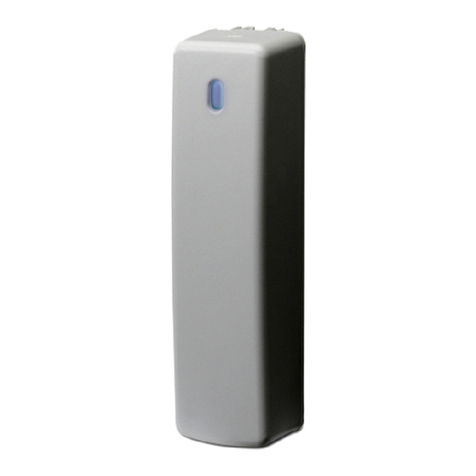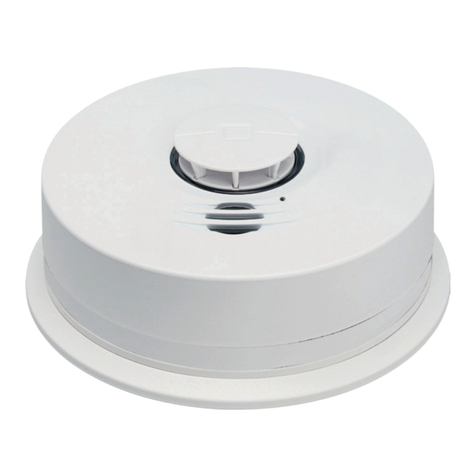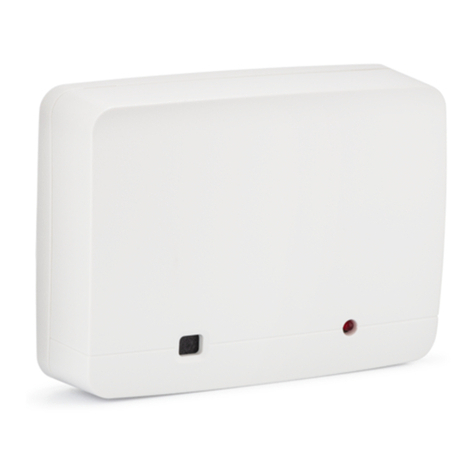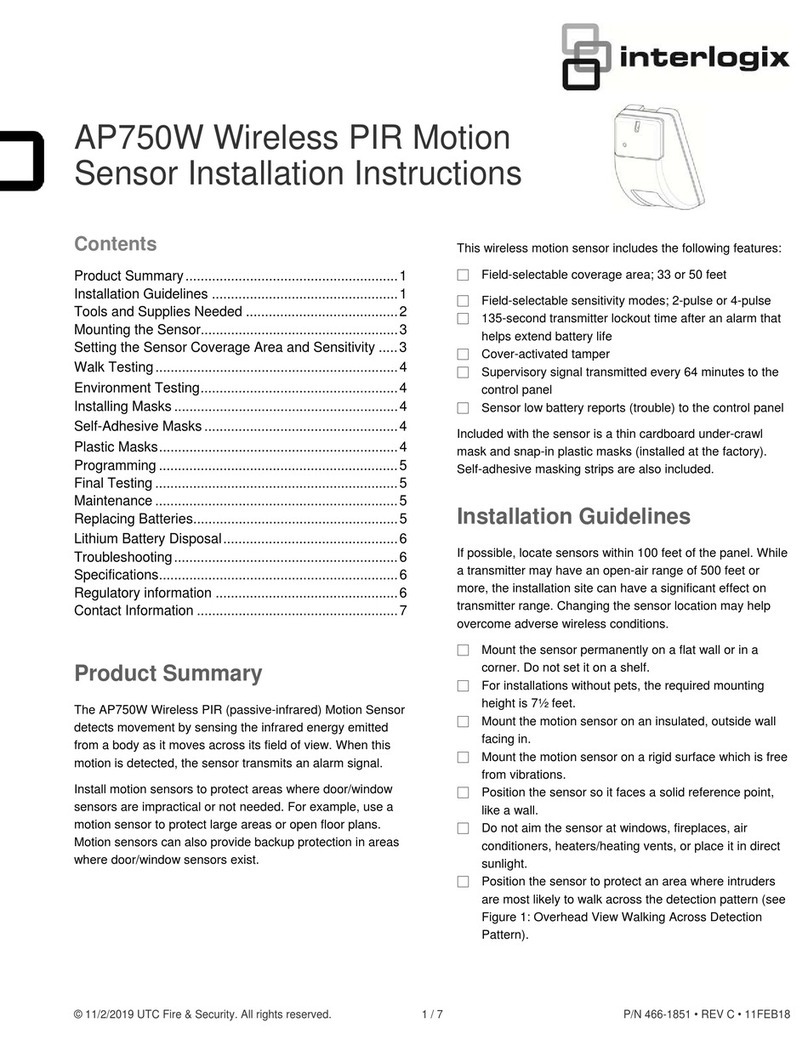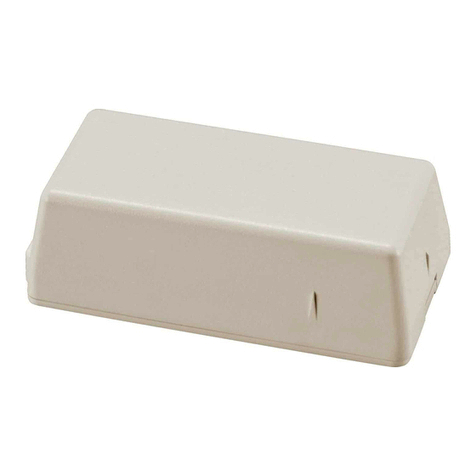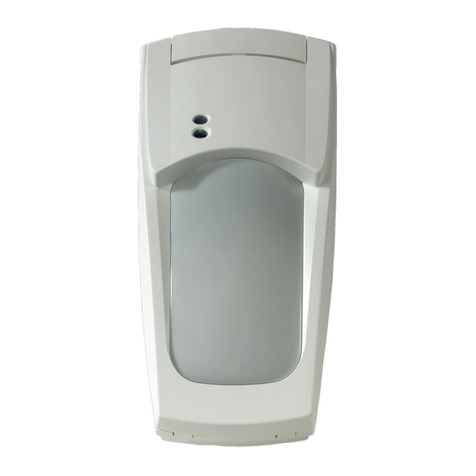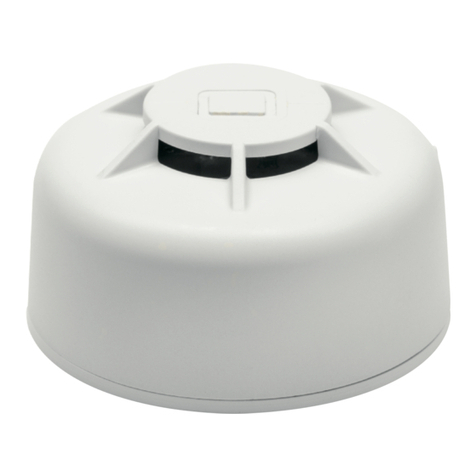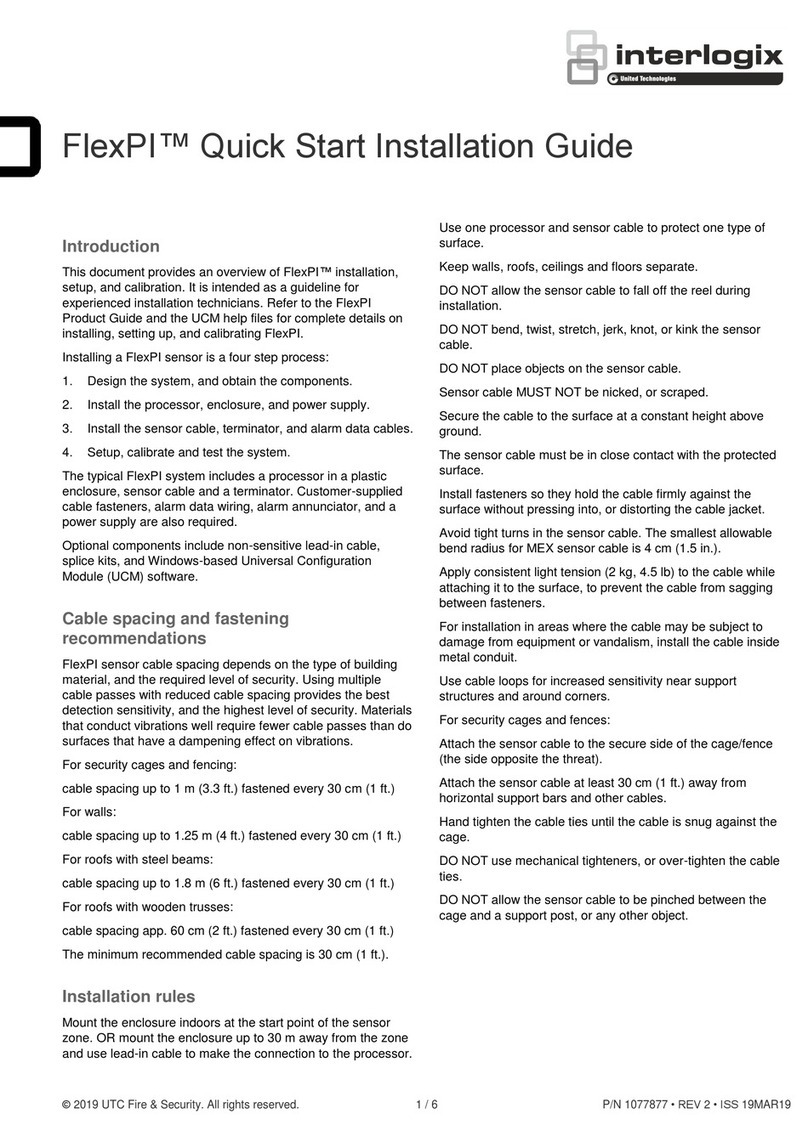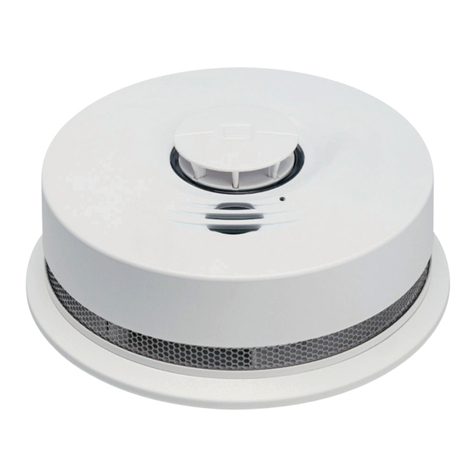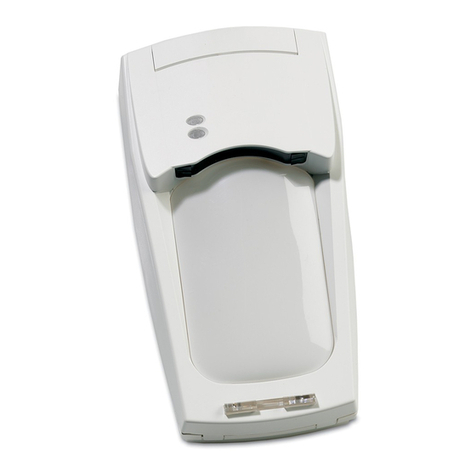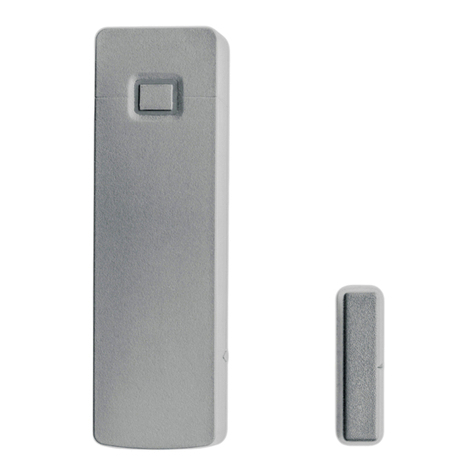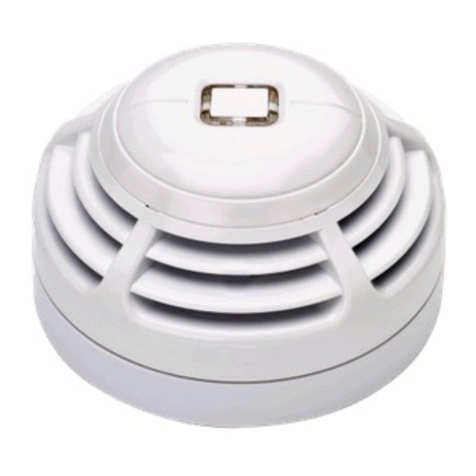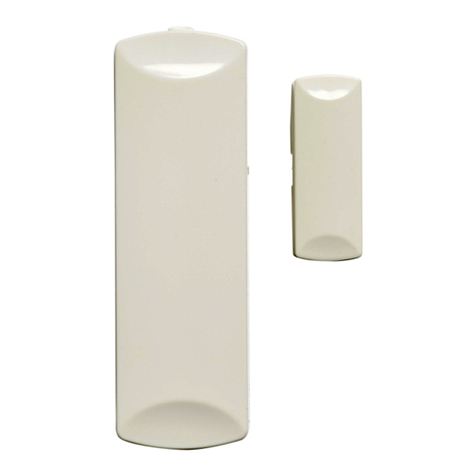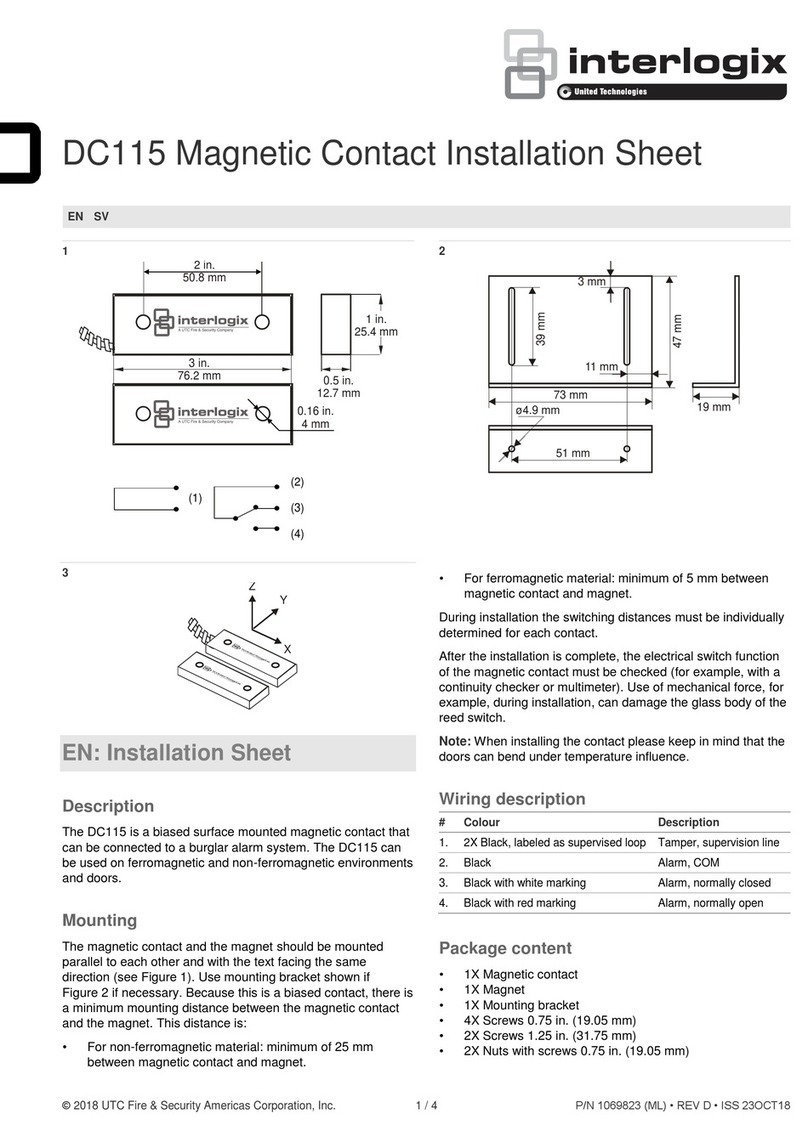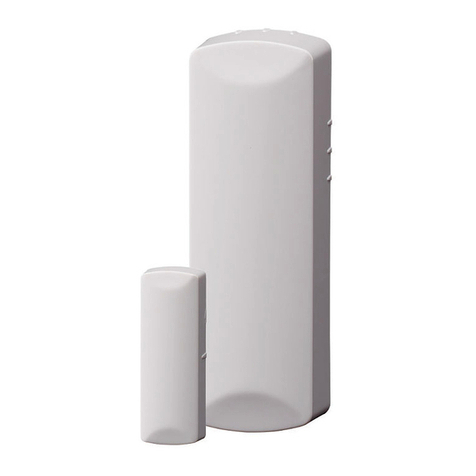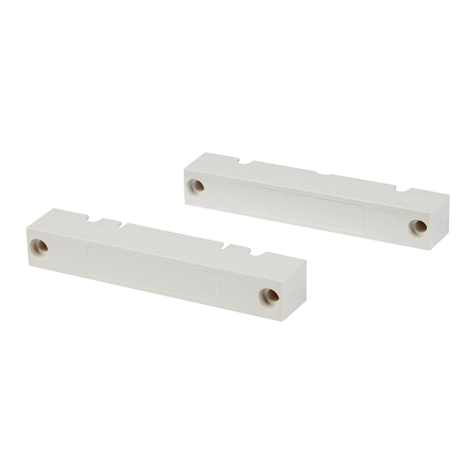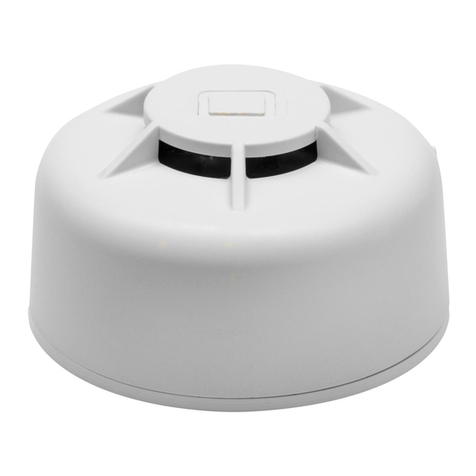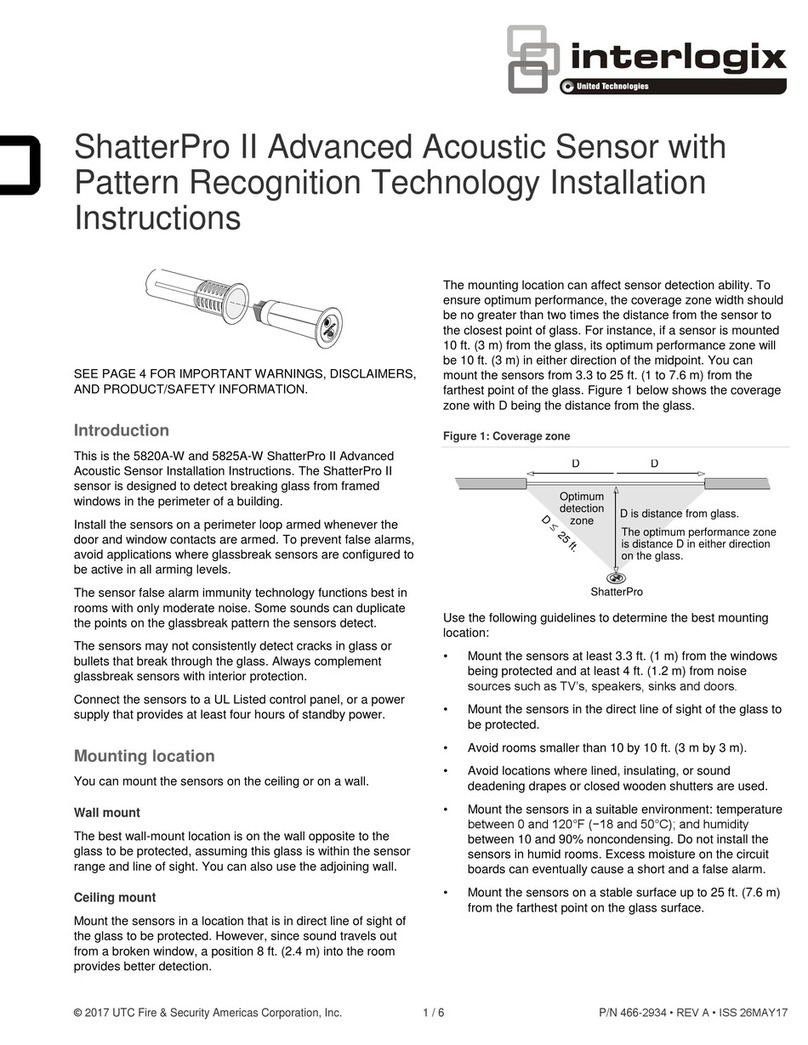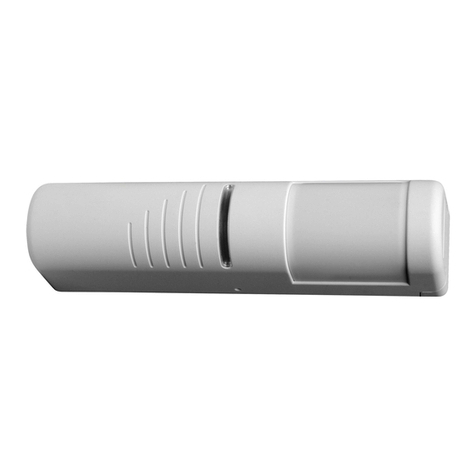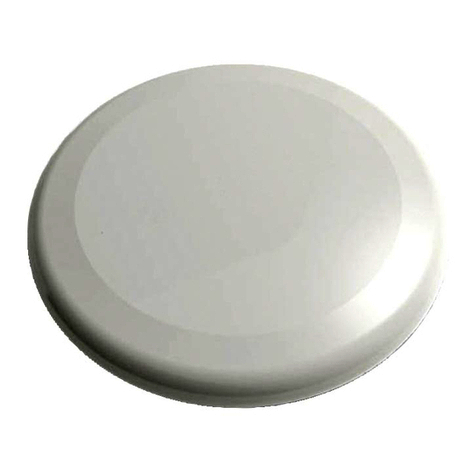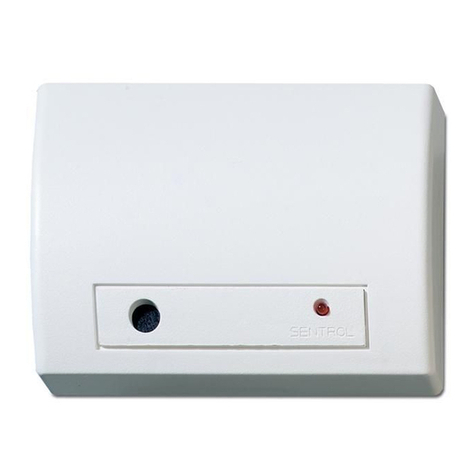
4 International Shock Sensor Installation Instructions
2. With the cover off the sensor, set the panel to Program
mode.
3. Proceed to the Learn Sensors menu.
4. Select the appropriate sensor group and sensor number
assignments.
5. When prompted by the panel to trip the sensor, press and
release the cover tamper switch.
6. Exit program mode.
Reed switch setting
After adjusting the Shock Sensor’s sensitivity, set DIP switch 5
to the appropriate setting, ON for enabled and OFF for
disabled.
RF testing
This section describes the basic steps for testing the sensor.
Refer to the specific panel or receiver installation instructions
for complete testing details.
1. Set the panel to Sensor Test.
2. Trip the sensor.
3. Listen for appropriate response from system sirens.
4. Exit Sensor Test.
Battery replacement
When the system indicates that the sensor has a low battery,
remove the old battery and install a new battery (Duracell
DL123A or a Sanyo CR123A) into the battery holder, observing
proper polarity.
Caution: Replace only with a Duracell DL123A battery or a
Sanyo CR123A battery. Observe polarity when installing a new
battery. Installing the battery backwards may cause damage to
the sensor.
Dispose of used batteries according to manufacturer’s
instructions and/or local government authorities.
Specifications
Euro Simon, International Quik Bridge®, and
International Concord
3.5 cm x 15.2 cm x 3.2 cm
90% relative humidity non-condensing
Duracell DL123A or Sanyo CR123A 3V Lithium
(part number 34-030)
433.050 MHz - 434.790 MHz
Regulatory information
PLACED ON THE MARKET BY:
UTC Fire & Security Americas Corporation, Inc.
3211 Progress Drive, Lincolnton, NC, 28092, USA
AUTHORIZED EU REPRESENTATIVE:
UTC Fire & Security B.V.
Kelvinstraat 7, 6003 DH Weert, Netherlands
Product warnings
and disclaimers
THESE PRODUCTS ARE INTENDED FOR SALE TO
AND INSTALLATION BY QUALIFIED
PROFESSIONALS. UTC FIRE & SECURITY
CANNOT PROVIDE ANY ASSURANCE THAT ANY
PERSON OR ENTITY BUYING ITS PRODUCTS,
INCLUDING ANY “AUTHORIZED DEALER” OR
“AUTHORIZED RESELLER”, IS PROPERLY
TRAINED OR EXPERIENCED TO CORRECTLY
INSTALL FIRE AND SECURITY RELATED
PRODUCTS.
For more information on warranty disclaimers and
product safety information, please check
https://firesecurityproducts.com/policy/product-
warning/ or scan the QR code.
European Union
directives
UTC Fire & Security hereby declares that this device is
in compliance with the applicable requirements and
provisions of all applicable rules and regulations,
including but not limited to the Directive 2014/53/EU.
For more information see:
www.utcfssecurityproducts.eu
2012/19/EU (WEEE directive): Products marked with
this symbol cannot be disposed of as unsorted
municipal waste in the European Union. For proper
recycling, return this product to your local supplier
upon the purchase of equivalent new equipment, or
dispose of it at designated collection points. For more
information see: www.recyclethis.info
This product may contain a battery that cannot be
disposed of as unsorted municipal waste in the
European Union. See the product documentation for
specific battery information. The battery is marked with
this symbol, which may include lettering to indicate
cadmium (Cd), lead (Pb), or mercury (Hg). For proper
recycling return the battery to your supplier or to a
designated collection point. For more information see
www.recyclethis.info
Contact information
www.utcfireandsecurity.com or www.interlogix.com
For customer support, see www.utcfssecurityproducts.eu
